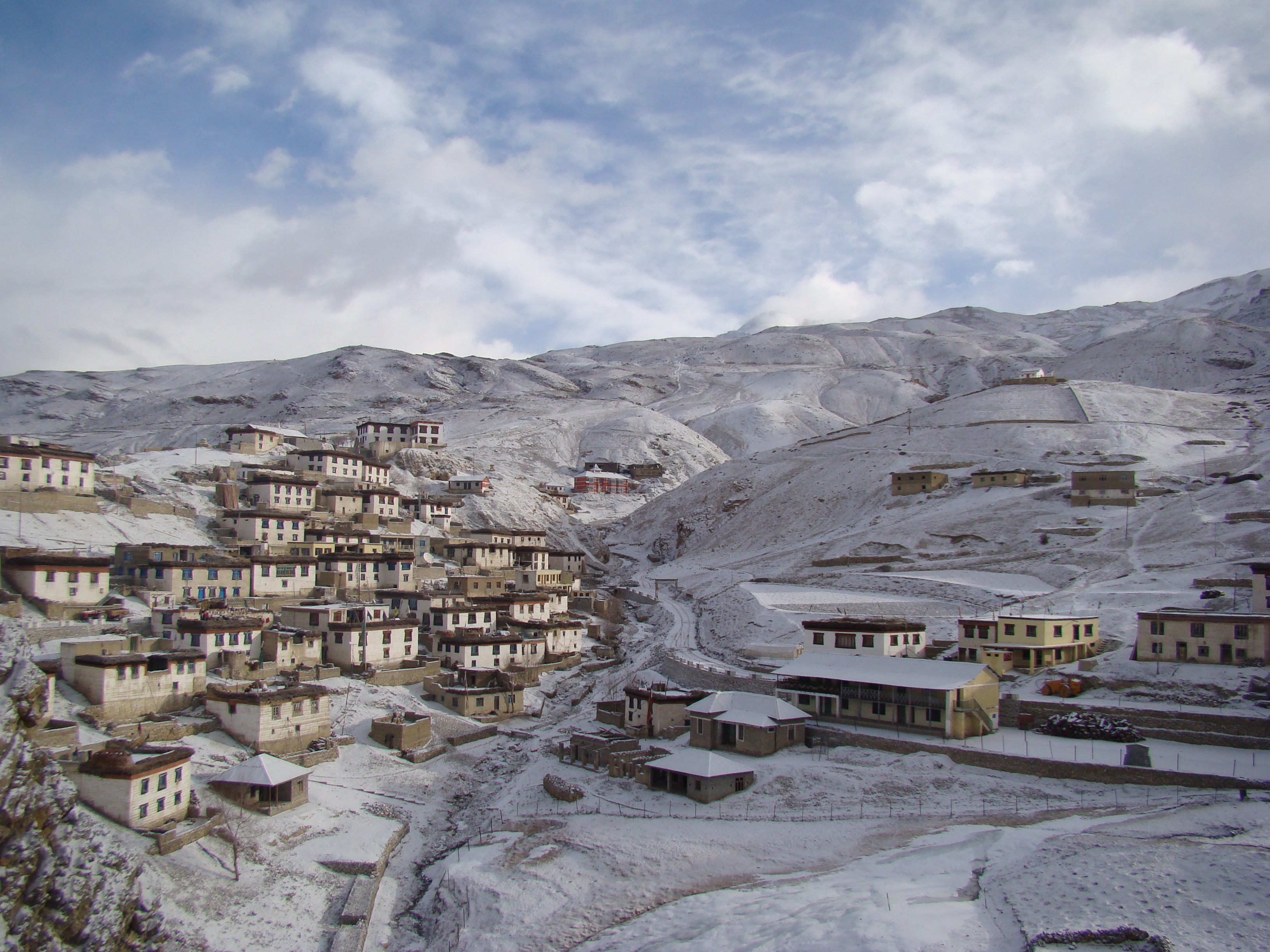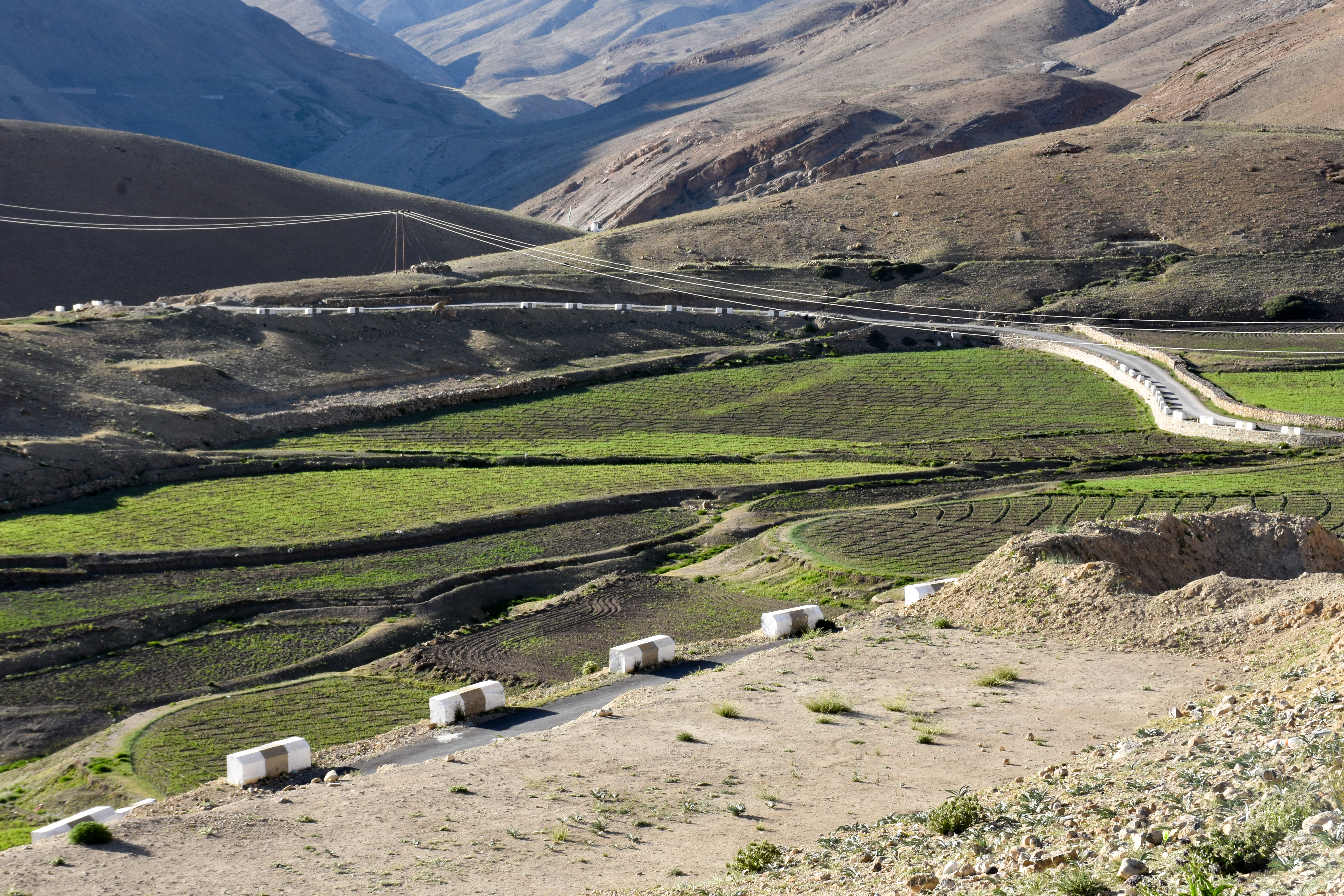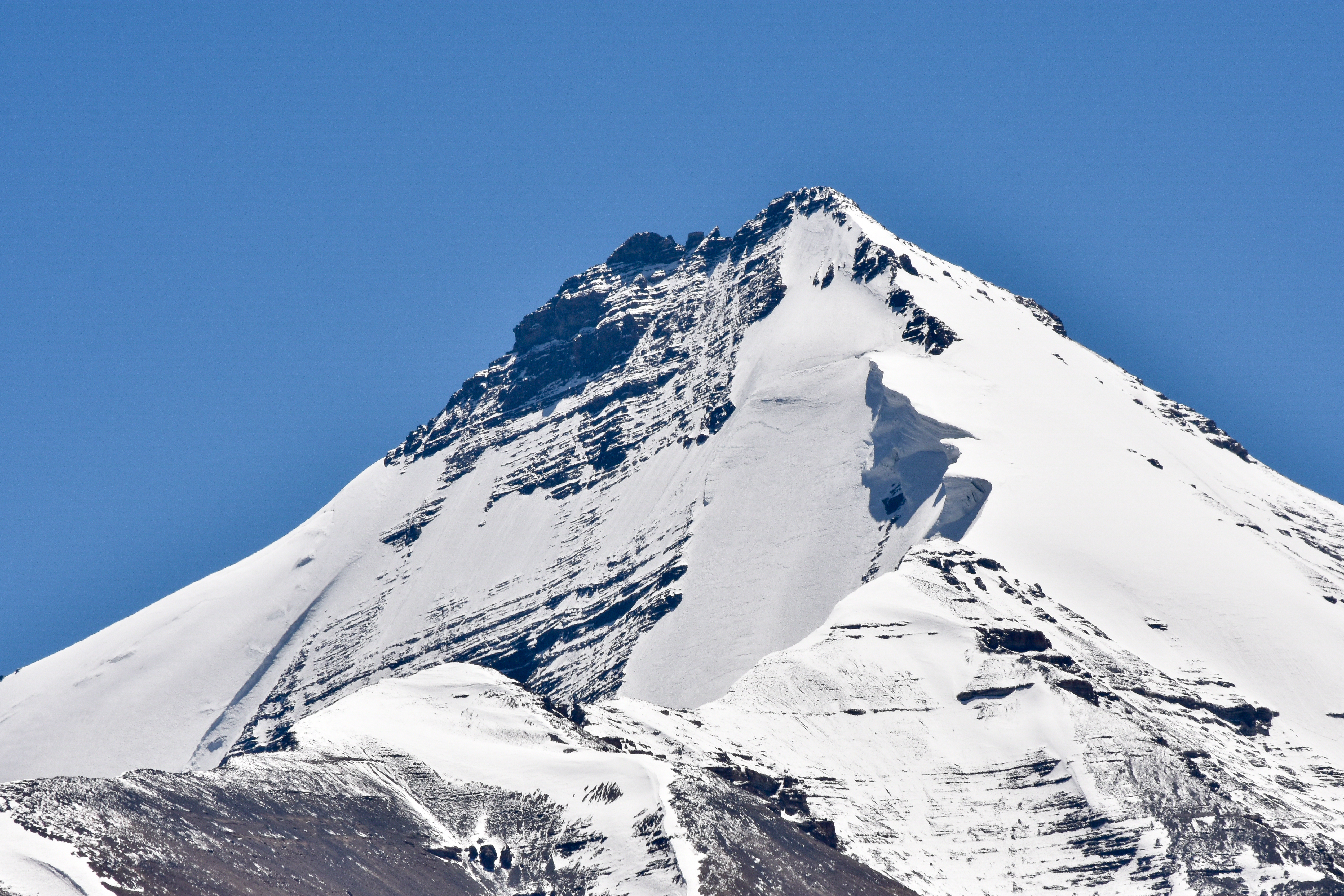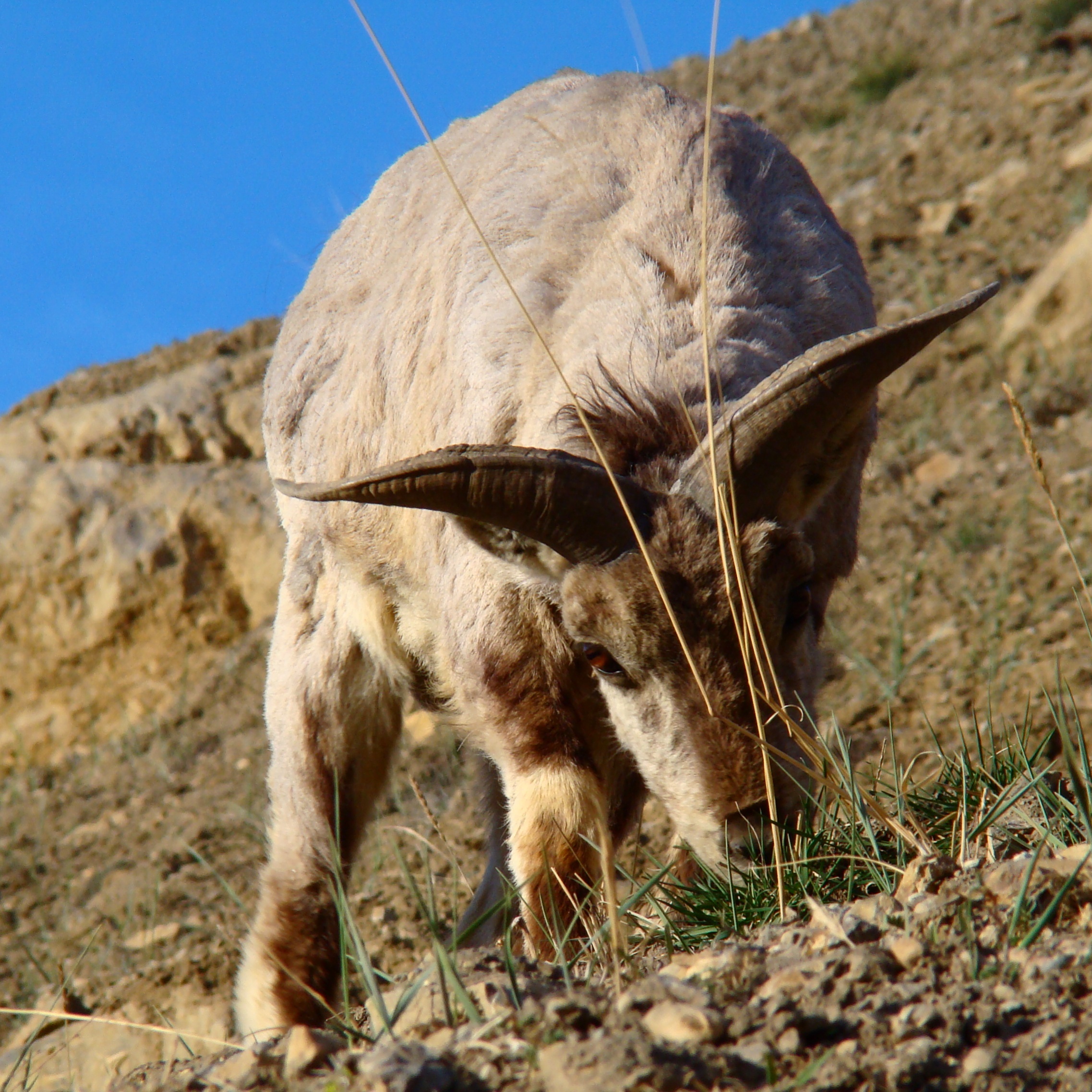Kibber Village, Spiti Valley, Himachal Pradesh on:
[Wikipedia]
[Google]
[Amazon]

 Kibber, also Kibber Khas and Khyipur, is a village high in the
Kibber, also Kibber Khas and Khyipur, is a village high in the

 The Gram Panchayat of Kibber or Kibber Gram Panchayat is a government office and local self-government body that governs the villages of Kibber Khas, Kee, Chicham, Gete and Tashigang. Kibber is located in the Development Block Spiti of the District Lahaul Spiti.
The Gram Panchayat of Kibber or Kibber Gram Panchayat is a government office and local self-government body that governs the villages of Kibber Khas, Kee, Chicham, Gete and Tashigang. Kibber is located in the Development Block Spiti of the District Lahaul Spiti.





 Owing to the sparse vegetation and the extreme winters, fewer birds are found in Spiti compared to the lower Himalayas and the plains of India. In July 1922, the English police officer and ornithologist
Owing to the sparse vegetation and the extreme winters, fewer birds are found in Spiti compared to the lower Himalayas and the plains of India. In July 1922, the English police officer and ornithologist
File:New Gompa Kibber Spiti Jun18 D72 7487.jpg, New Gompa, Kibber (ca. Jun '18)
File:Kibber-20-traditionelles Haus-gje.jpg, Traditional building in Kibber
File:Purple Wildflowers Kibber Spiti Jun18 D72 7356.jpg, ''Oxytropis'' spp. in arid soil (ca. Jun '18)
File:Purple Wildflower Kibber Spiti Jun18 DSC00088.jpg, Purple geranium
File:Thorny Rose Kibber Spiti Jun18 D72 7399.jpg, Thorny rose in arid soil (ca. Jun '18)
File:Thistle Kibber Himachal Jun18 D72 7387.jpg, Thomson's thistle (ca. Jun '18)
File:Brandts Mountain Finch Breeding Kibber Jun18 D72 7363.jpg, Brandt's mountain finch (breeding plumage)
File:Kanamo Peaks Southwest Kibber Spiti Jun18 D72 7743.jpg, Terrain above Kibber to Kanamo Peak
File:Kanamo Peaks South Kibber Spiti Jun18 D72 7523.jpg, Kanamo peaks from the south
File:KeyMonastery topview Spiti Himachal Jun18 D72 7663.jpg, Kye Monastery from Gete Chorten
File:Kibber-02-Anfahrt-gje.jpg, Road from Kaza winding up the gorge
File:Chicham Bridge East Spiti Jun18 D72 7453.jpg, Chicham bridge on road to Lahaul
Wikimapia
{{Authority control Buddhist monasteries in Himachal Pradesh Villages in Lahaul and Spiti district
 Kibber, also Kibber Khas and Khyipur, is a village high in the
Kibber, also Kibber Khas and Khyipur, is a village high in the Spiti Valley
Spiti (pronounced as Piti in Bhoti language) is a high-altitude region of the Himalayas, located in the north-eastern part of the northern Indian state of Himachal Pradesh. The name "Spiti" means "The middle land", i.e. the land between Tibe ...
in the Himalayas
The Himalayas, or Himalaya (; ; ), is a mountain range in Asia, separating the plains of the Indian subcontinent from the Tibetan Plateau. The range has some of the planet's highest peaks, including the very highest, Mount Everest. Over 100 ...
at in Himachal Pradesh
Himachal Pradesh (; ; "Snow-laden Mountain Province") is a state in the northern part of India. Situated in the Western Himalayas, it is one of the thirteen mountain states and is characterized by an extreme landscape featuring several peaks ...
in northern India
India, officially the Republic of India (Hindi: ), is a country in South Asia. It is the seventh-largest country by area, the second-most populous country, and the most populous democracy in the world. Bounded by the Indian Ocean on the so ...
. It contains a monastery and is a base for visiting the Kibber Wildlife Sanctuary. It is located from Kaza
A kaza (, , , plural: , , ; ota, قضا, script=Arab, (; meaning 'borough')
* bg, околия (; meaning 'district'); also Кааза
* el, υποδιοίκησις () or (, which means 'borough' or 'municipality'); also ()
* lad, kaza
, ...
and a bus service connects them in the summer months. Agriculture forms the backbone of the local economy and lush green fields are abundant. It is the base for visitors to the Kibber Wildlife Sanctuary, home to about 30 snow leopards. Treks to neaby peaks and to a high pass in the Zanskar range
Zanskar, Zahar (locally) or Zangskar, is a tehsil of Kargil district, in the Indian union territory of Ladakh. The administrative centre is Padum (former Capital of Zanskar). Zanskar, together with the neighboring region of Ladakh, was brief ...
between Spiti and Ladakh
Ladakh () is a region administered by India as a union territory which constitutes a part of the larger Kashmir region and has been the subject of dispute between India, Pakistan, and China since 1947. (subscription required) Quote: "Jammu and ...
start from Kibber.
History
Kibber is the last village in Spiti on the traditional trade route to Ladakh and Tibet. One of the earliest descriptions is by botanistThomson Thomson may refer to:
Names
* Thomson (surname), a list of people with this name and a description of its origin
* Thomson baronets, four baronetcies created for persons with the surname Thomson
Businesses and organizations
* SGS-Thomson Mic ...
based on his expedition in September 1847. The route crosses the Zanskar range through the Parang La (pass) at an altitude of . It then descends along the Pare Chu
The Parang River (), also called Para River () and Pare Chu () is an upstream tributary of the Sutlej River, that originates in the Indian state of Himachal Pradesh and ends in Himachal Pradesh again, but flows through Ladakh and Tibet before do ...
(river) to Hanle and the Indus River
The Indus ( ) is a transboundary river of Asia and a trans-Himalayan river of South and Central Asia. The river rises in mountain springs northeast of Mount Kailash in Western Tibet, flows northwest through the disputed region of Kashmir, ...
. Thomson observed that houses in Kibber were constructed of stone, unlike the mud construction used in the rest of Spiti. He noted that farmers had terraced the hillside for above Kibber.
In earlier times, annual trade fairs were held in Kibber and other locations in Spiti. Traders would come from Tibet, Ladakh, Chamba and Kullu to barter their wares. With the closing of the Indo-Tibet border, these fairs have lost their historical purpose.
Geography
Kibber Khas is located on a limestone cliff on the left bank of the Spiti River. With an area of in an arid cold desert at , Kibber is about higher than Kaza. It is from the sub-divisional headquartersKaza
A kaza (, , , plural: , , ; ota, قضا, script=Arab, (; meaning 'borough')
* bg, околия (; meaning 'district'); also Кааза
* el, υποδιοίκησις () or (, which means 'borough' or 'municipality'); also ()
* lad, kaza
, ...
. After passing the Kye Monastery
Kye Gompa (also spelled Kyi, Ki, Key, or Kee - pronounced like the English word ''key'') is a Tibetan Buddhist monastery of the Gelugpa sect located on top of a hill at an altitude of above sea level, close to the Spiti River, in the Spiti ...
, the road from Kaza climbs steeply up a narrow gorge on the left bank of the Puri Lungpa, a tributary of the Spiti, to reach Kibber. It is one of the highest villages in the world that is inhabited year round.
The terrain slopes gently upwards from Kibber towards the northeast until the towering Zanskar Range
Zanskar, Zahar (locally) or Zangskar, is a tehsil of Kargil district, in the Indian union territory of Ladakh. The administrative centre is Padum (former Capital of Zanskar). Zanskar, together with the neighboring region of Ladakh, was brief ...
. The streams in the area have cut deep gorges in the limestone strata. Mountain ranges on all sides provide some protection, and water from the streams is useful for irrigation. Farmers in Kibber are able to grow crops during the summer.
Demographics and amenities
Kibber Khas is a small village located in Spiti sub-division of Lahul and Spiti district, Himachal Pradesh with total 77 families residing. The Kibber Khas village has a population of 366 of which 187 are males while 179 are females as per Population Census 2011. In Kibber Khas village, the population of children of age 0-6 is 36 which makes up 9.84% of the total population of village. The average Sex Ratio of Kibber Khas village is 957 which is lower than Himachal Pradesh state average of 972. Child Sex Ratio for the Kibber Khas as per census is 565, lower than the Himachal Pradesh average of 909. Kibber Khas village has lower literacy rate compared to Himachal Pradesh. In 2011, the literacy rate of Kibber Khas village was 72.73% compared to 82.80% of Himachal Pradesh. In Kibber Khas, male literacy stood at 82.93% while female literacy rate was 62.65%. Kibber has a civil dispensary, a high school, a post office, a telegraph office and a community TV set.Administration

 The Gram Panchayat of Kibber or Kibber Gram Panchayat is a government office and local self-government body that governs the villages of Kibber Khas, Kee, Chicham, Gete and Tashigang. Kibber is located in the Development Block Spiti of the District Lahaul Spiti.
The Gram Panchayat of Kibber or Kibber Gram Panchayat is a government office and local self-government body that governs the villages of Kibber Khas, Kee, Chicham, Gete and Tashigang. Kibber is located in the Development Block Spiti of the District Lahaul Spiti.
Economy
Traditionally, agriculture has been the mainstay of the economy. As the men were often traveling on trade to Tibet, Punjab and other parts of India, the women did the agricultural work primarily for subsistence. As Kibber is the base for several treks and for visits to the Kibber Wildlife Sanctuary, tourism is now part of the economy. Several homestays have been setup, and locals guide treks.Agriculture
When botanist Thomson visited Kibber in September 1847, he found terraced and irrigated fields up to above the village. Barley was ready for harvest. Hugh Whistler, ornithologist, visited Kibber in July 1922 and observed barley and green peas in the fields. In 2011, an area of of Kibber formed pastures for grazing. This amounted to 83.7% of the area of the village. Only 11.3% of the land was used for agriculture, with 85.3% of this being irrigated.Barley
Barley (''Hordeum vulgare''), a member of the grass family, is a major cereal grain grown in temperate climates globally. It was one of the first cultivated grains, particularly in Eurasia as early as 10,000 years ago. Globally 70% of barley pr ...
and pulses including black peas and green peas are the major crops. With the opening of roads, there is a shift to cash crops.
Places of interest



Monasteries
Kibber has a small gompa. The well-known Kye Gompa is en route from Kaza to Kibber. The nearby village of Gete has achorten
A stupa ( sa, स्तूप, lit=heap, ) is a mound-like or hemispherical structure containing relics (such as ''śarīra'' – typically the remains of Buddhist monks or nuns) that is used as a place of meditation.
In Buddhism, circumamb ...
on a cliff overlooking the Kye Gompa about below.
Trekking and mountaineering
Kibber is a base for climbing the nearby Kanamo Peak. The name Kanamo means either "mountain of good omen" or "white hostess (lady)". The trek is rated as an "easy ridge walk with scree on the lower slopes" by Indian mountaineerHarish Kapadia
Harish Kapadia (born 11 July 1945) is a Himalayan mountaineer, author and long-time editor of the '' Himalayan Journal'' from India. He has been awarded the Patron's Medal of the Royal Geographical Society, the Life Time Achievement Award fo ...
. The trek from Kibber takes 2-3 days. The season for this trek is late June to the end of September.
The trail over the Parang La to Ladakh starts from Kibber. This strenuous trek takes about 5 days to cross the Parang La and another 5 days to descend to Karzok on the shore of Tso Moriri in Ladakh. The total distance is about .
Kibber Wildlife Sanctuary
The Kibber Wildlife Sanctuary was established on 1st Nov 1999 with an area of . On 7th Apr 2013, the area was increased to . The elevation range of this sanctuary is above mean sea level.Flora
The vegetation here is sparse, Kibber being well above the treeline which extends to . The most common shrub is '' Caragana versicolor'', a slow-growing, woody dwarf shrub with multiple stems forming a low canopy. Thomson, the English botanist who visited in 1947, observed that the plants found at these altitudes of were similar to those found at in lower parts of the Spiti valley. He attributed this to the extreme aridity of the climate and the protection afforded to the Kibber area by the lofty mountain ranges on all sides. In a recent study, over 70 species of plants were identified in this sanctuary, compared to about 9,000 species in the whole of the Himalayas. Several plants used in the traditional Tibetan medical system, also known as Sowa-Rigpa, are found here. Eight rare and endangered medicinal plant species have been identified in this sanctuary. ''Aconitum rotundifolium'', ''Arnebia euchroma'', ''Ephedra gerardiana'', ''Gentiana kurroo'' and ''Dactylorhiza hatagirea'' are some threatened but medicinally important plants found in here.Mammals
The Kibber Wildlife Sanctuary (Kibber WLS) is home to the endangeredsnow leopard
The snow leopard (''Panthera uncia''), also known as the ounce, is a Felidae, felid in the genus ''Panthera'' native to the mountain ranges of Central Asia, Central and South Asia. It is listed as Vulnerable species, Vulnerable on the IUCN Red ...
(''Panthera uncia''). The Forest Department of Himachal Pradesh reported 25-30 snow leopards in the Kibber Wildlife Sanctuary in 2018. A survey in 2021 estimated the total population of snow leopards in Himachal at about 73.
Conservation of snow leopards is a priority. The Himalayan Snow Leopard Research Centre in Kibber village was setup in collaboration with the Nature Conservation Foundation
The Nature Conservation Foundation is a non-governmental wildlife conservation and research organisation based in Mysore, India. They promote the use of science for wildlife conservation in India.
History
The Nature Conservation Foundation was ...
, Mysore
Mysore (), officially Mysuru (), is a city in the southern part of the state of Karnataka, India. Mysore city is geographically located between 12° 18′ 26″ north latitude and 76° 38′ 59″ east longitude. It is located at an altitude of ...
with the goal of instituting and encouraging focused short and long-term studies. Snow leopard sighting tours are popular in winter. These result in noise and pollution of many vehicles. In 2021, the Spiti district administration banned such car rallies in Kibber and other areas favoured by snow leopards. The majority of snow leopards in Himachal were found outside protected areas, indicating that the local people are active in conservation of these big cats.
Other big animals found in the Wildlife Sanctuary are bharal
The bharal (''Pseudois nayaur''), also called the blue sheep, is a caprine native to the high Himalayas. It is the only member of the genus ''Pseudois.'' It occurs in India, Bhutan, China (in Gansu, Ningxia, Sichuan, Tibet, and Inner Mongolia), ...
(''Psedois nayaur''), ibex
An ibex (plural ibex, ibexes or ibices) is any of several species of wild goat (genus ''Capra''), distinguished by the male's large recurved horns, which are transversely ridged in front. Ibex are found in Eurasia, North Africa and East Africa. ...
(''Capra sibirica'') Himalayan wolf
The Himalayan wolf (''Canis lupus chanco'') is a canine of debated taxonomy. It is distinguished by its genetic markers, with mitochondrial DNA indicating that it is genetically basal to the Holarctic gray wolf, genetically the same wolf as the ...
(''Canis lupus chanco)'' and red fox
The red fox (''Vulpes vulpes'') is the largest of the true foxes and one of the most widely distributed members of the Order (biology), order Carnivora, being present across the entire Northern Hemisphere including most of North America, Europe ...
(''Vulpes vulpes''). The bharal and ibex are prey for snow leopards.
Birds

 Owing to the sparse vegetation and the extreme winters, fewer birds are found in Spiti compared to the lower Himalayas and the plains of India. In July 1922, the English police officer and ornithologist
Owing to the sparse vegetation and the extreme winters, fewer birds are found in Spiti compared to the lower Himalayas and the plains of India. In July 1922, the English police officer and ornithologist Hugh Whistler
Hugh Whistler (28 September 1889 – 7 July 1943), F.Z.S., M.B.O.U. was an English police officer and ornithologist who worked in India. He wrote one of the first field guides to Indian birds and documented the distributions of birds in notes in ...
made a short trip from Lahaul down the upper Spiti River. He reached Kibber (Kibar) and Kye Monastery before turning back. During his trip, he collected over 30 species of birds. Of these, about 20 were from Kibber and the area above (now the Kibber WLS). Species collected by Whistler around Kibber included a number of songbirds: several rosefinches, mountain finches and snow finches, redstarts, larks, wrens, house sparrows and martins. Larger birds included a kestrel, lammergeier
The bearded vulture (''Gypaetus barbatus''), also known as the lammergeier and ossifrage, is a very large bird of prey and the only member of the genus ''Gypaetus''. Traditionally considered an Old World vulture, it actually forms a separate mi ...
and ruddy shelducks. Snow pigeons, snow cocks and a griffon were found above Kibber from . Alpine choughs were common.
Most of the species reported by Whistler were also observed by the American zoologist Walter Koelz
Walter Norman Koelz (September 11, 1895, Waterloo, Michigan – September 24, 1989) was an American zoologist and museum collector.
Walter Koelz's parents were immigrants from the Black Forest region of Germany, and his father was a village black ...
during his trip down the Spiti river in September 1933. Koelz did not explore the Kibber locality, though.
The eBird.org website, used by birding enthusiasts to record sightings, lists 64 species sighted in Kibber village over the past several years. The most frequently seen species: yellow-billed or alpine chough and red-billed chough
The red-billed chough, Cornish chough or simply chough ( ; ''Pyrrhocorax pyrrhocorax''), is a bird in the crow family, one of only two species in the genus '' Pyrrhocorax''. Its eight subspecies breed on mountains and coastal cliffs from the we ...
; snow finches, mountain finches; house sparrow
The house sparrow (''Passer domesticus'') is a bird of the sparrow family Passeridae, found in most parts of the world. It is a small bird that has a typical length of and a mass of . Females and young birds are coloured pale brown and grey, a ...
and russet sparrow
The russet sparrow (''Passer cinnamomeus''), also called the cinnamon or cinnamon tree sparrow, is a passerine bird of the sparrow family Passeridae. A chunky little seed-eating bird with a thick bill, it has a body length of . Its plumage is ...
; black redstart
The black redstart (''Phoenicurus ochruros'') is a small passerine bird in the genus ''Phoenicurus''. Like its relatives, it was formerly classed as a member of the thrush family (Turdidae), but is now known to be an Old World flycatcher (Muscic ...
and white-capped redstart
The white-capped redstart or white-capped water redstart (''Phoenicurus leucocephalus'') is a passerine bird of the Old World flycatcher family Muscicapidae native to the Indian Subcontinent and Southeast Asia, and to certain regions of Central A ...
; snow pigeon
The snow pigeon (''Columba leuconota'') is a species of bird in the genus ''Columba'' in the family Columbidae from hilly regions of central Asia. They are grey, black, pale brown and white birds and two subspecies are recognised: ''C. l. leucono ...
and hill pigeon
The hill pigeon, eastern rock dove, or Turkestan hill dove (''Columba rupestris'') is a species of bird in the family Columbidae.
Description
The hill pigeon is a stout-bodied pigeon, similar in size and general appearance to the rock dove but ...
; horned lark
The horned lark or shore lark (''Eremophila alpestris'') is a species of lark in the family Alaudidae found across the northern hemisphere. It is known as "horned lark" in North America and "shore lark" in Europe.
Taxonomy, evolution and systema ...
; Himalayan griffon
The Himalayan vulture (''Gyps himalayensis'') or Himalayan griffon vulture is an Old World vulture native to the Himalayas and the adjoining Tibetan Plateau. It is one of the two largest Old World vultures and true Accipitridae, raptors. It is li ...
. Most of the species observed 100 years ago by Whistler are in these eBird checklists.
Transport
Kibber is located fromKaza
A kaza (, , , plural: , , ; ota, قضا, script=Arab, (; meaning 'borough')
* bg, околия (; meaning 'district'); also Кааза
* el, υποδιοίκησις () or (, which means 'borough' or 'municipality'); also ()
* lad, kaza
, ...
. A bus service connects them during the summer months. Travellers coming from Manali or Lahaul on NH-505 over the Kunzum La can reach Kibber without going to Kaza. After passing Losar
Losar (; "new year"William D. Crump, "Losar" in ''Encyclopedia of New Year's Holidays Worldwide'' (McFarland & Co.: 2008), pp. 237-38.) also known as Tibetan New Year, is a festival in Tibetan Buddhism. The holiday is celebrated on various d ...
and Hanle, NH-505 crosses a bridge from the left bank of the Spiti River after Kialto village. Just before the bridge, a minor road continues on the left bank to reach Kibber after a distance of .
Accommodation
Kibber has several homestays. The nearest hotels are in Kaza.Gallery
See also
*Snow leopard
The snow leopard (''Panthera uncia''), also known as the ounce, is a Felidae, felid in the genus ''Panthera'' native to the mountain ranges of Central Asia, Central and South Asia. It is listed as Vulnerable species, Vulnerable on the IUCN Red ...
* Key Monastery
Kye Gompa (also spelled Kyi, Ki, Key, or Kee - pronounced like the English word ''key'') is a Tibetan Buddhist monastery of the Gelugpa sect located on top of a hill at an altitude of above sea level, close to the Spiti River, in the Spiti ...
* Pin Valley National Park
Pin Valley National Park is a National park of India located in the Spiti Valley in the Lahaul and Spiti district, in the state of Himachal Pradesh. It is located in far northern India. It is part of Cold Desert (biosphere reserve).
History
S ...
* Spiti
Spiti (pronounced as Piti in Bhoti language) is a high-altitude region of the Himalayas, located in the north-eastern part of the northern Indian state of Himachal Pradesh. The name "Spiti" means "The middle land", i.e. the land between Tibe ...
References
External links
Wikimapia
{{Authority control Buddhist monasteries in Himachal Pradesh Villages in Lahaul and Spiti district